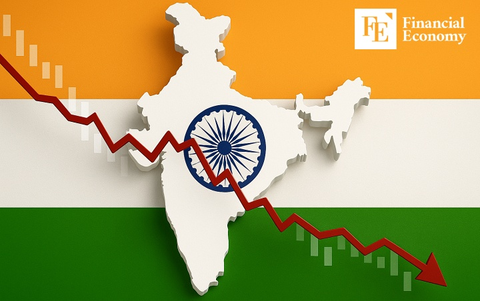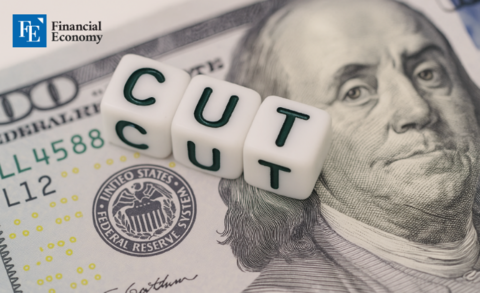Warning Signs of a U.S. Economic ‘Heart Attack,’ While Trump Pushes Ahead with ‘Unlimited Fiscal’ Experiment
Input
Modified
“Tax Cuts Criticized as Fatal to Fiscal Health” Paradoxical Fiscal Structure: Increased Spending, Decreased Revenue Public Criticism from Economic Leaders like Elon Musk

As the U.S. national debt surpasses USD 36 trillion, President Donald Trump is simultaneously pushing forward two controversial policies—tax cuts and the abolition of the debt ceiling—stoking fears of deepening economic instability. His tax cut plan, a key pledge since his candidacy, is projected to add USD 24 trillion in additional debt over the next decade. Trump’s proposal to eliminate the debt ceiling altogether has sent shockwaves through the markets. In response, business leaders and market experts—including Tesla CEO Elon Musk—have voiced strong opposition, arguing that “what’s needed now is structural reform, not tax cuts.”
Market-Friendliness Over Fiscal Stability?
On 4th June (local time), The Wall Street Journal (WSJ) reported that the U.S. national debt reached USD 36 trillion, equivalent to 122% of the country’s GDP. The corresponding annual interest payments now exceed USD 1 trillion. WSJ warned of deteriorating fiscal conditions and Washington’s “irresponsible budget management,” citing multiple expert opinions.
Peter Orszag, CEO of Lazard and former Director of the Office of Management and Budget under President Obama, stated in a recent interview, “Those who warned about unsustainable deficits and debt in the past were like the boy who cried wolf. But now, the wolf is truly circling us.” Hedge fund titan Ray Dalio added starkly, “The U.S. economy likely has no more than three years to avoid a heart attack.”
Amid these warnings, President Trump’s proposed tax cuts are expected to worsen the fiscal situation. The Congressional Budget Office (CBO) recently reported that if Trump's tax policies are implemented, the federal debt could grow by over USD 24 trillion over the next decade. This would not only exacerbate fiscal deterioration but could also directly threaten the U.S. credit rating.
Trump’s proposed tax cuts—focused on corporate tax reductions and income tax relief—are seen as an extension of his pro-market ideology. However, experts largely view the plan negatively, noting that even short-term economic benefits are uncertain and that the cuts would likely deepen long-term structural fiscal imbalances. With inequality worsening in the post-COVID era, many argue that tax breaks for the wealthy could spark political backlash, erode consumer confidence, and undermine trust in public policy.
Concerns Grow Over U.S. Credit Rating and Dollar Credibility
Amid mounting criticism, Trump has intensified the controversy by calling for a complete abolition of the federal debt ceiling. On June 4, he wrote on his social media platform Truth Social, “To prevent economic disaster, the federal debt ceiling must be eliminated entirely. If the debt ceiling issue isn’t resolved smoothly, it could cause catastrophic damage to the U.S. and the world.”
He even cited Democratic Senator Elizabeth Warren as being in agreement and urged bipartisan cooperation between Republicans and Democrats.
The U.S. Congress currently imposes a statutory debt ceiling to maintain fiscal discipline. The current cap is USD 36.1 trillion, and once that limit is reached, the federal government can no longer raise funds to repay existing debt—potentially triggering a default. While the Treasury Department has been using extraordinary measures to delay this outcome, failure to raise or suspend the limit will eventually result in default.
Trump’s proposal to abolish the ceiling is interpreted by many as a willingness to expand government spending without restraint, fueling fierce backlash. Critics argue this is an irresponsible move, especially as the debt burden nears critical levels. One financial industry official stated, “Pursuing tax cuts and spending increases simultaneously—without improving the fiscal balance or boosting revenue—undermines long-term sustainability. If confidence in the federal government’s solvency erodes, even the dollar’s status as the global reserve currency could be challenged.”

Trump’s Political Calculations Collide with Market Concerns
Elon Musk, CEO of Tesla, also slammed Trump’s tax proposal, posting on X (formerly Twitter) on June 4 stating, “KILL the BILL. Driving America into bankruptcy is unacceptable. Any new spending bill must not massively expand deficits or raise the debt ceiling by USD 5 trillion.”
Musk argued that unchecked spending would make the U.S. a slave to debt.
He had also posted or shared over ten posts the previous day criticizing Trump’s economic proposals. “Sorry, but I can’t stay silent anymore,” Musk wrote. He further posted, “This bloated, outrageous, fat-laden spending bill is disgusting and appalling.”
His comments seemed to mock Trump’s own characterization of the tax package as a “big, beautiful law.” Observers note that Musk—who left the White House advisory council last month—appears to be positioning himself in direct confrontation with Trump.





















